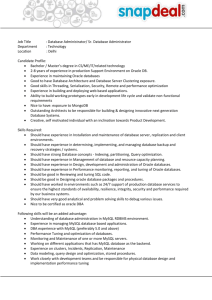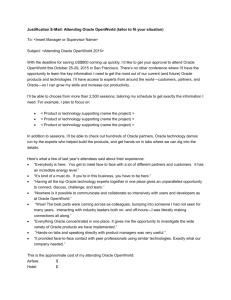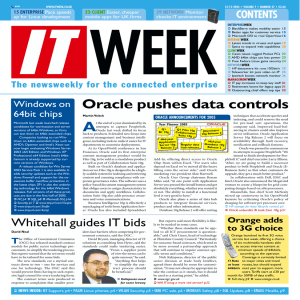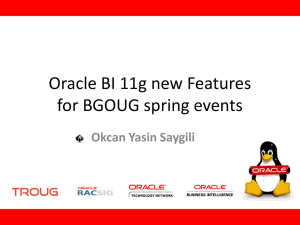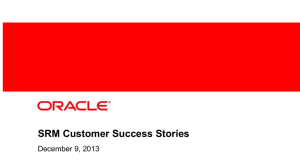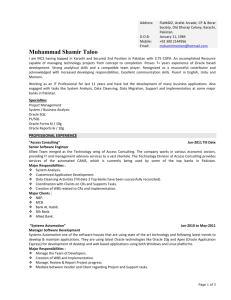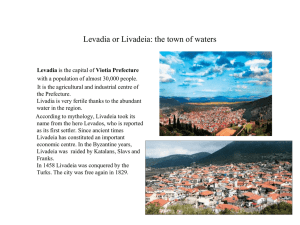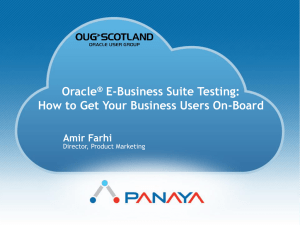Military Installations Mobile Application
advertisement
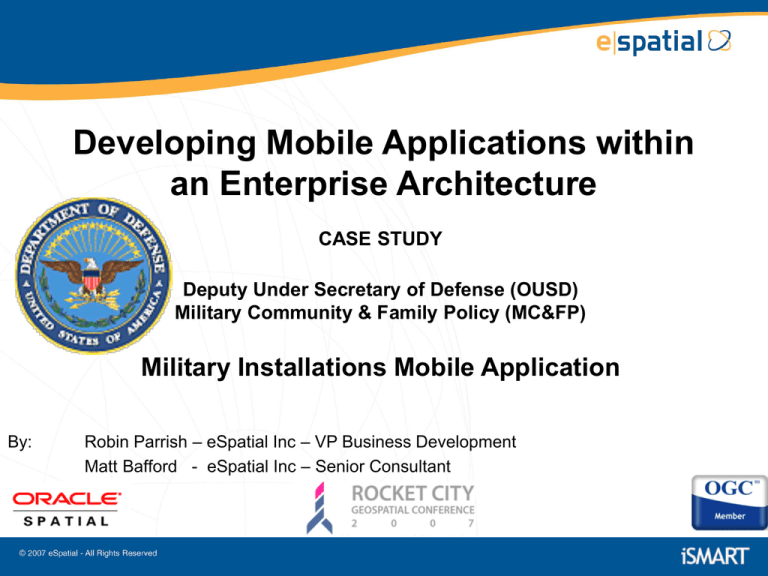
Developing Mobile Applications within an Enterprise Architecture CASE STUDY Deputy Under Secretary of Defense (OUSD) Military Community & Family Policy (MC&FP) Military Installations Mobile Application By: Robin Parrish – eSpatial Inc – VP Business Development Matt Bafford - eSpatial Inc – Senior Consultant Presentation Outline • Military Installation Requirements • Application Components – Demo of Desktop Application • The Enterprise Architecture • Mobile Development Approach • Examples of Mobile Application • Conclusion – Value of the Enterprise Architecture MilitaryINSTALLATIONS Requirements • Deliver a user friendly GUI with Google Maps like functionality Pan/Zoom, ToolTips, Interactive • GeoCode existing address of base level services as defined by DoDITC • Enable geospatial searches for base level services • Easy of Use – Hide traditional GIS complexity from end users • Display and query “Nearby” Points of Interest Data • Route between base level services and POI’s • Extend and use existing Oracle DB platform Storage and analysis of geospatial data in Oracle Spatial Implementing the Oracle LBS API for routing Support service personnel on travel via mobile devices Application Components • Integrated through the MilitaryHOMEFRONT Oracle Portal – Standard web browser application • • • • • • Oracle 10g Database and Application Server Oracle Spatial with LBS API eSpatial’s iSMART development framework NAVTEQ Data Real-time Custom Weather services via XML Application available to industry standard Mobile devices Enterprise Architecture Military HomeFront Portal www.militaryhomefront.dod.mil Military Installations Application www.militaryinstallations.dod.mil Military Installations Mobile Application www.militaryinstallations.dod.mil/mobile 100,000 hits Per month XML Weather Service OGC Image Service •Oracle AS 10g Deployment Server 8 CPU Linux Server •Oracle Portal •iSMART 5.1 Development Server Oracle DB EE 10gR2 Database Oracle Spatial Server Oracle RAC Database Server Database Server •Oracle 10g OC4J •iSMART 5.1 Dev 17,000,000 + spatial geometries (SDO_Geo) USA, Germany, England, Belgium, Portugal, Italy, Spain 84GB Spatial Data 2.2GB Business/textual Data 2X8, 1X4 CPU Clustered Linux Servers Redhat EE vs 3.4.6 Example of Web Application Military HomeFront Portal Integrated OGC WMS Image Feed Mobile Application Requirements • Must use the existing Enterprise Infrastructure • All functionality must be available to the mobile device – – – – Map rendering and navigation including pan/zoom Routing POI searches External services – weather/image • MUST BE INTUATIVE AND EASY TO USE Development Considerations • Limitations of Mobile Devices – – – – – Support of JavaScript Navigation tools Interactive Screens No cursor Limitation of various mobile browsers – Blackberry – Windows CE / Mobile Internet Explorer Development Approach • Mobile Specific Path – http://militaryinstallations.dod.mil/mobile/ • WURFL – Exact match / Loose match – Only trust exact match – Screen size • Windows Headers – Screen size • BlackBerry User Agent • Automatic redirect if sure Development Approach (Cont.) • SiteMesh – Page headers and overall layout differences • Struts – Model View Controller – Same code for different presentation • JSP Includes – Majority of HTML same for mobile/desktop • CSS / HTML – HTML tags indicate content type – CSS indicates content style Installation Location Mapping of Services Locating POI’s Routing Supported Mobile Devices HP iPAQ Blackberry Palm Treo Conclusion Advantages of the Enterprise Architecture • • • • Single source of data Single source of application code Web application code mostly reusable Server side processing – No need for any application code on the mobile device • Ability to integrate web services at the middel tier – OGC WMS Image Services – XML Weather Services • Leverage Enterprise Security Model if required CHEAP AND FAST TO BUILD THE MOBILE APPLICATION



